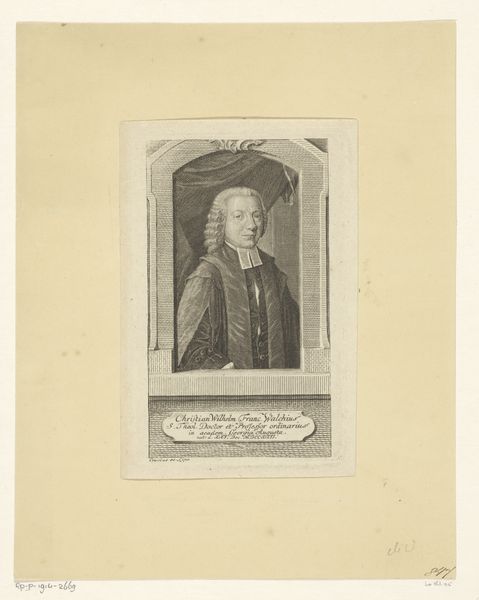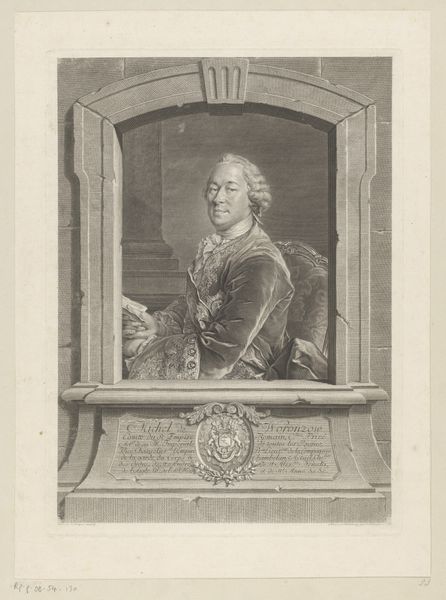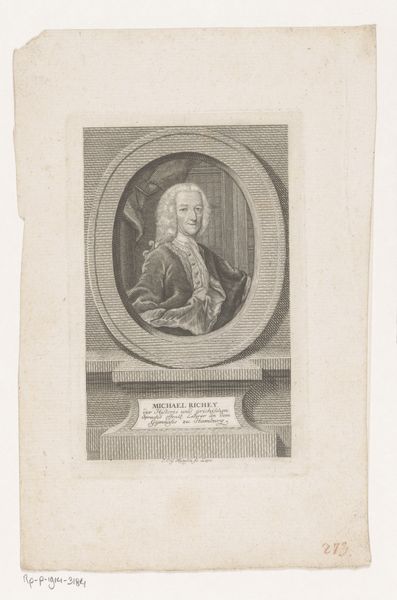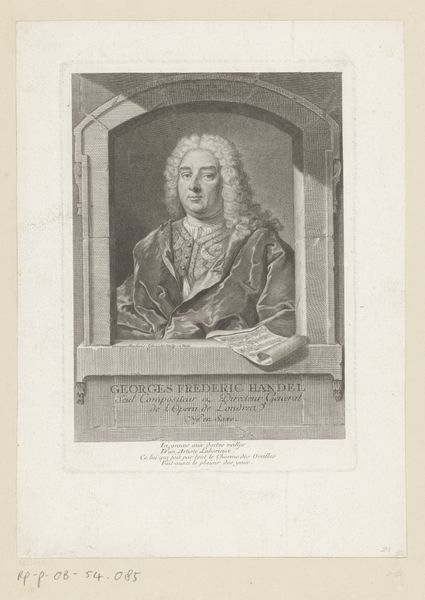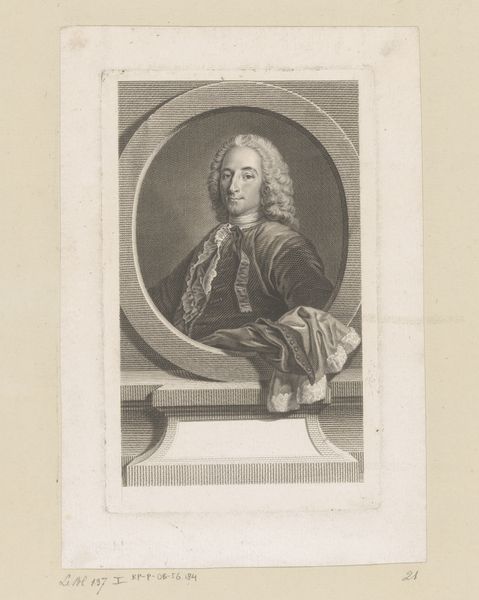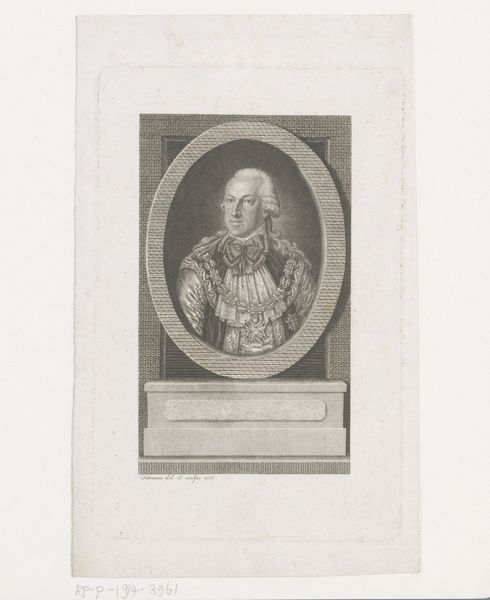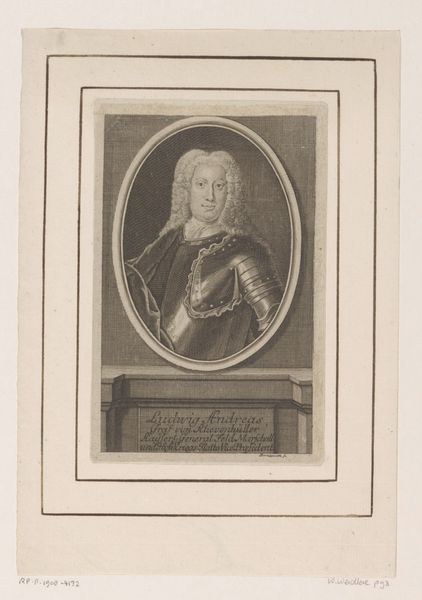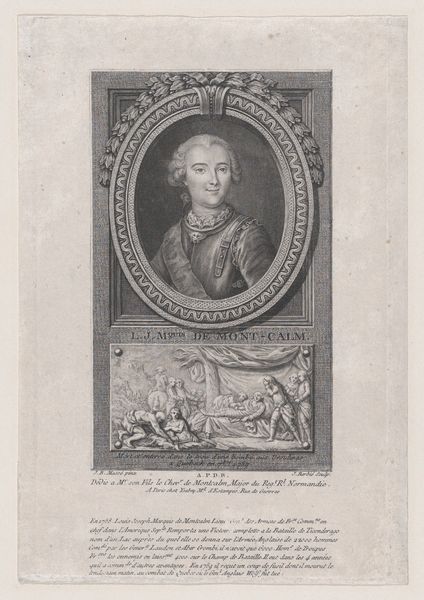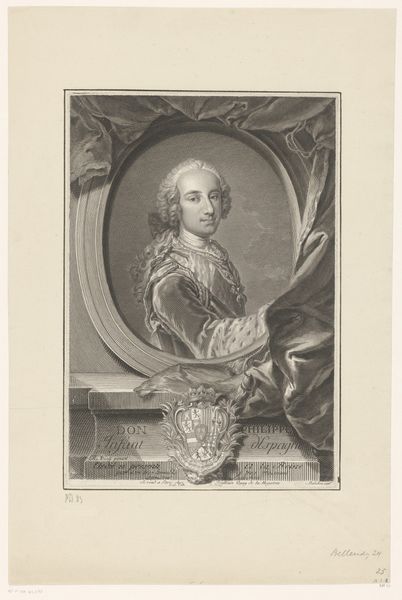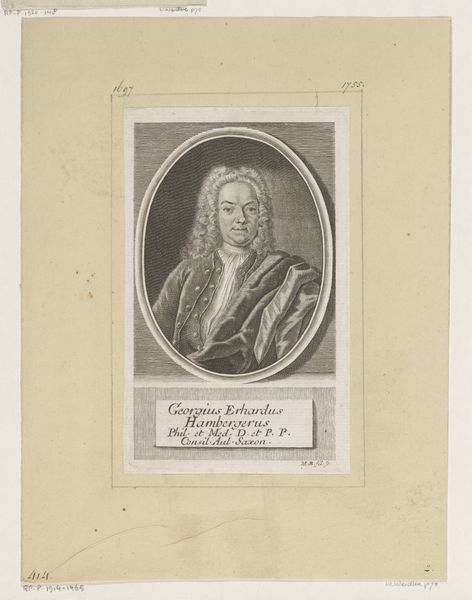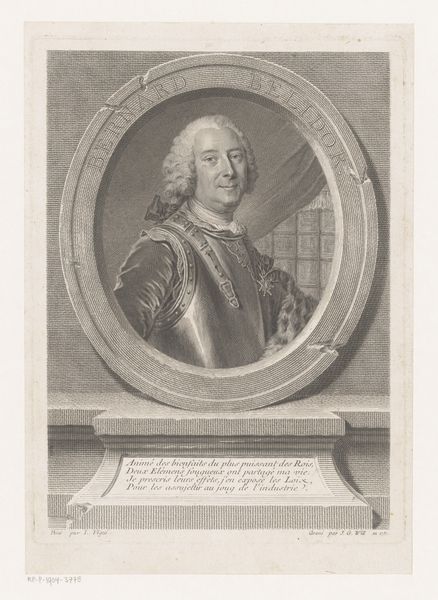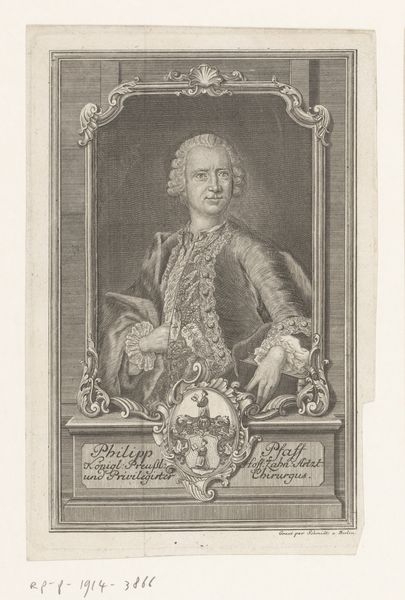
Portret van Marc-Pierre de Voyer de Paulmy, marquis d'Argenson 1764 - 1811
0:00
0:00
engraving
#
neoclacissism
#
19th century
#
history-painting
#
engraving
Dimensions: height 176 mm, width 116 mm
Copyright: Rijks Museum: Open Domain
Curator: What a dignified figure! This engraving, dating roughly from 1764 to 1811, portrays Marc-Pierre de Voyer de Paulmy, marquis d'Argenson. Editor: It's remarkably serene for a history painting. There’s something about the gray scale that brings it calmness. I’m instantly curious about the techniques used to achieve that smooth gradation in tones. Curator: As a neoclassical work, it adheres to that era's interest in crisp, clear lines and formal presentation. Consider the engraver's labor in producing such meticulous detail—it's not just the aesthetic, but the hours upon hours of skilled work. Editor: Absolutely, the labor involved speaks volumes. And look at how the symbolic details reinforce his status: The elaborate embellishments, his posture and expression, not to mention that intriguing inscription down there! Curator: Precisely! The text on the block presents its own symbolic code through Latin: 'Themides alumnus, Musarum amicus, Militiae patronus'. It's reinforcing d'Argenson as a patron of the muses as well as the Law and protector of the army—a triad of powers carefully constructed in his image. Editor: I noticed also the frame surrounding the figure – what kind of meanings and allusions do you read there? Is there anything worth exploring in those elements from the visual culture perspective? Curator: That carved block, as you observe, further establishes a very curated setting: a monument in image, celebrating d’Argenson achievements. Engravings were, after all, crucial means for disseminating propaganda at the time, spreading social codes along with ideas across a very specific stratum of society. Editor: True, this engraving then acts as a fascinating intersection where personal reputation meets societal structures. Thinking about the social life of engravings back in the late 1700s gives me goosebumps! Curator: And as we look closely, thinking of the labor of production alongside d'Argenson's crafted symbolism gives depth to an apparently very simple, dignified picture. Editor: Right. Seeing how symbols and their meanings come to life when filtered through the lens of art production practices adds a richer view. Thanks for this deep dive.
Comments
No comments
Be the first to comment and join the conversation on the ultimate creative platform.
